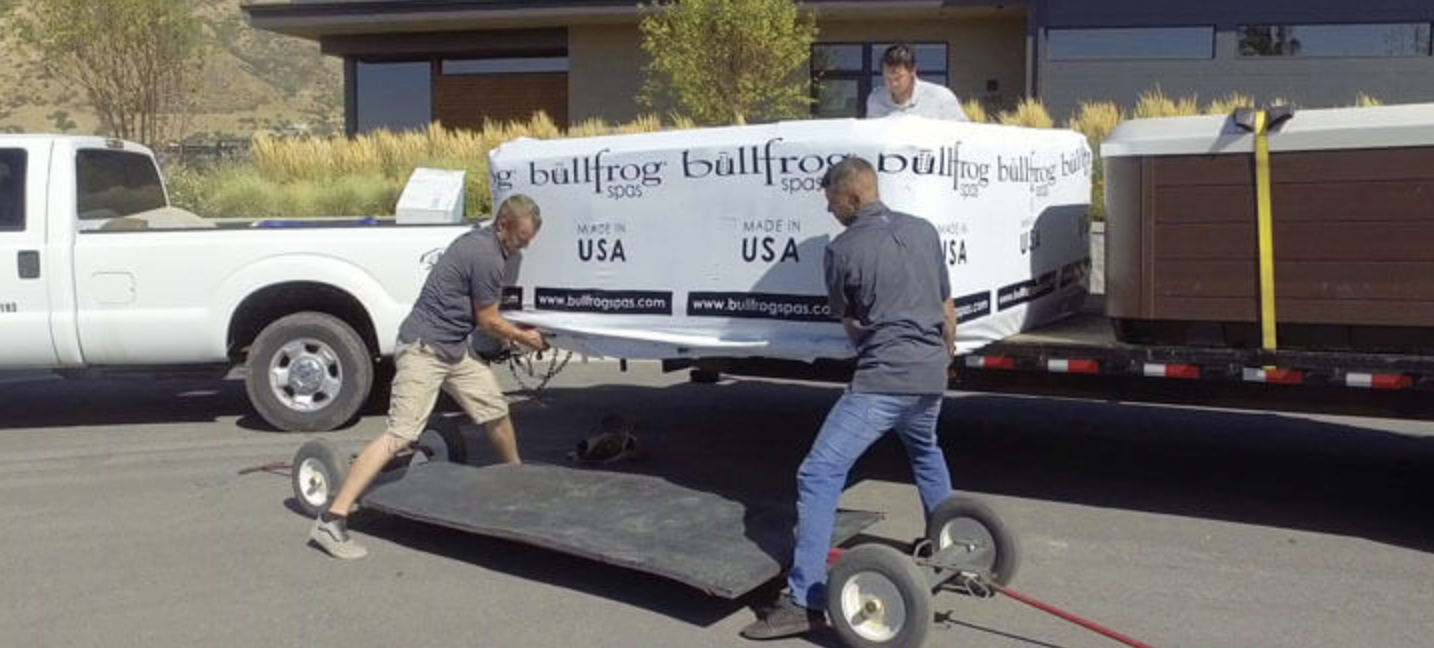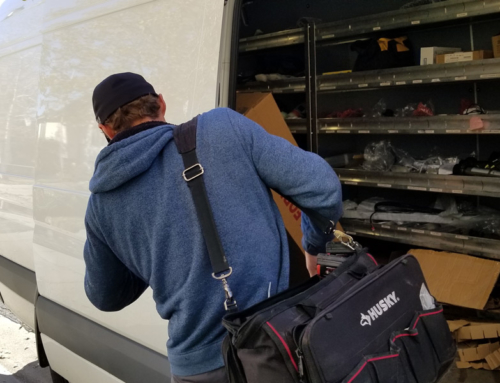Hands have been shaken, signatures have been signed, a check is in hand and a delivery date has been set. It’s a done deal, right?
Not right.
In fact, there is one more major opportunity for you to create a positive customer experience. There is one more chance for you to use this sale to generate future sales and to gain new customers. Unlike some retailers, big box stores and online dealers especially, you can provide more than just a curbside drop off. It’s all in the delivery. Want to know how? Keep reading.
Offer Them More
After an hour of walking, talking, and listening, you and the customer have come to an agreement. A model has been chosen and a price agreed upon, now is the time to discuss delivery without stunning them with a whole new set of costs. Let’s take a minute to review Home Advisor’s 2017 hot tub transport/delivery factors. This is the information your customer is likely to be finding online so you need to be prepared with the same information the customer most likely is:
- Empty above-ground hot tubs can weigh 400 to 1,000 pounds
- It can take anywhere from two to six people to move one hot tub
- Initial delivery costs an additional $100 to $150
Depending the size of the hot tub, the final location and the transport method, we know costs can actually be as low as $85 or as high as $800. On average, the cost of delivery and installation ranges between $157 and $491. Smart retailers will have built delivery and installation costs into the final price which means after outlining what the delivery entails, you (because you’re a smart retailer) can say to the customer, “Of course, this is all included in the sale price we’ve agreed upon.” Why is this so great? Because what the customer hears is “no extra charge for delivery.”
Explain the Process
Both the retailer and the customer have certain responsibilities when it comes to spa delivery. It is frustrating for everyone involved if the spa is damaged during transport or if the placement site isn’t properly prepared. So, just what are the responsibilities of the two parties?
It is the retailer’s responsibility to ensure the spa arrives safely at its destination. That destination is the actual site where the hot tub will be used. Be ready to explain exactly how you’ll be delivering, so it’s not a surprise. Hot tubs generally arrive on a truck or trailer and any of the following equipment may be used to place it in the chosen location:
- Spa dollies: These wheeled carts are designed to make moving extremely heavy items easier and work best on firm, solid surfaces such as driveways, sidewalks and decks.
- Ramps: These allow for smooth transition from the truck or trailer to the ground. They are also necessary for maneuvering the spa up or down steps as necessary. They may also be used to bridge draining ditches if needed.
- Spa sleds: A spa sled is a high quality, plastic and foam sheet that allows two people to easily move a 1300 pound hot tub over virtually any surface be it gravel, grass or asphalt. It allows for easy movement in narrow spaces and tight turns.
- Boom truck: This type of truck works like a mini-crane to lift hot tubs over carports, garages, hedges and the like and is mostly used for heights under 40 feet.
- Crane: Primarily used for rooftop placements or dropping tubs into secluded locations.
Dollies, ramps, and sleds are by far the most common type of equipment used to places spas in the on-site locations.
Since a typical delivery is done by 2-3 people, taking a spa over a small wall or just 1 or 2 steps is a major issue if you’re not prepared with a sled or ramps.
It’s important to realize that in most cases a customer has never had a spa before and really has no idea what it takes to get a spa in place. Just asking the question “Do you have a 40-inch width all the way to the pad?” is not enough. The customer will not understand or consider that an 8-foot spa with a dolly or sled cannot make a 90 degree turn on a 40” pathway and so requires much more space.
Since a typical delivery is done by 2-3 people, taking a spa over a small wall or just 1 or 2 steps is a major issue if you’re not prepared with a sled or ramps. And what the customer might call a “mild slope” either up, down, or to the side can be a major obstacle that ends up requiring more delivery help when a 900-pound spa is 8.5 feet tall on its side.
It is the customer’s responsibility to make sure there is easy access to the placement site, that the site is properly prepared to support the weight of the spa (with water and people), that the site has appropriate utility access, and that the placement provides service and repair access. Norm Coburn of New England Spas takes this a step further: “We always do a site survey/backyard evaluation to determine the best location for a spa—for service access, privacy, and the electrical hook-up.”
Site Surveys
Giving your customer a pretty pre-delivery checklist is nice, but one universal checklist isn’t necessarily going to cover specific site requirements. Each delivery will be different, which is why the site survey is such an important part of the delivery process. Juliet Phelps, co-owner of Ajax Pool and Spa in Aspen, Colorado, is quick to point out that “when [customers] come into a showroom, they’re not thinking about the pitch of their roof and whether snow could pile up there, slide down and drown them. That’s the stuff you should be looking at.”
Key elements of spa delivery that the customer is depending on you to address include:
- Installation according to warranty specifications
- Identifying and meeting universal electrical codes as well as state, county, and municipal codes
- Knowledge of and adherence to energy regulations (such as Renewable Energy Mitigation Programs)
- Meeting Homeowner’s Associations requirements
- Acquiring necessary permits for delivery and installation
Another crucial element of the delivery process is taking responsibility for managing any problems that may be created by your installation. Will your equipment block street access? Will it interfere with bus routes? Will it hinder emergency vehicle access? In most instances this probably won’t be an issue, but if you’re using a crane or boom truck, this could very well be the case. If so, you’ll need to inform the appropriate agencies prior to delivery so they can devise alternate routes during the delivery/installation process.
Having your people do an on-site evaluation prior to spa delivery will make the actually delivery and setup much easier.
- It gives you the opportunity to advise the customer of any last-minute preparations, such as trimming the shrub that overhangs the walkway.
- It assures the customer that you will be able to get the spa exactly where they want it.
- It ensures you bring the right equipment to move the spa into location.
- If larger concerns arise, it also lets you postpone delivery until those issues are dealt with, which saves both you and the customer time and money.
Final Tips…
Delivery isn’t just about getting the spa from the store to the customer’s home. It’s much more than just loading and unloading the product. It’s about that one last chance to upsell a firepit, patio seating, or a spa surround. It’s about that one last chance to make a memorable impression that will lead to referrals—i.e., future business. The delivery process starts as soon as the sales contract is signed and it doesn’t end until the customer is comfortably submerged in their new hot tub.








Thanks for mentioning how cranes can be used for dropping tubs to specific locations. I’m wanting to buy a big hot tub and put it on my deck, however, I’m not sure how to get it back there. It sounds like a good idea to get a company to drop it down there using a crane.